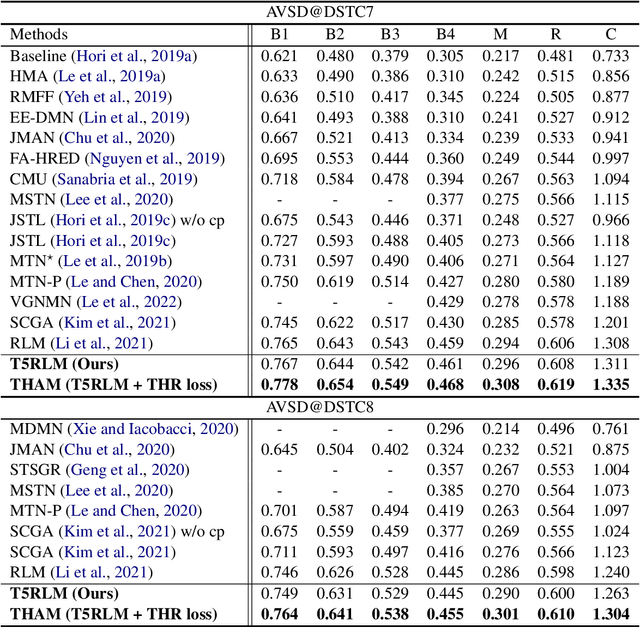Information-Theoretic Text Hallucination Reduction for Video-grounded Dialogue
Paper and Code
Dec 12, 2022



Video-grounded Dialogue (VGD) aims to decode an answer sentence to a question regarding a given video and dialogue context. Despite the recent success of multi-modal reasoning to generate answer sentences, existing dialogue systems still suffer from a text hallucination problem, which denotes indiscriminate text-copying from input texts without an understanding of the question. This is due to learning spurious correlations from the fact that answer sentences in the dataset usually include the words of input texts, thus the VGD system excessively relies on copying words from input texts by hoping those words to overlap with ground-truth texts. Hence, we design Text Hallucination Mitigating (THAM) framework, which incorporates Text Hallucination Regularization (THR) loss derived from the proposed information-theoretic text hallucination measurement approach. Applying THAM with current dialogue systems validates the effectiveness on VGD benchmarks (i.e., AVSD@DSTC7 and AVSD@DSTC8) and shows enhanced interpretability.
 Add to Chrome
Add to Chrome Add to Firefox
Add to Firefox Add to Edge
Add to Edge